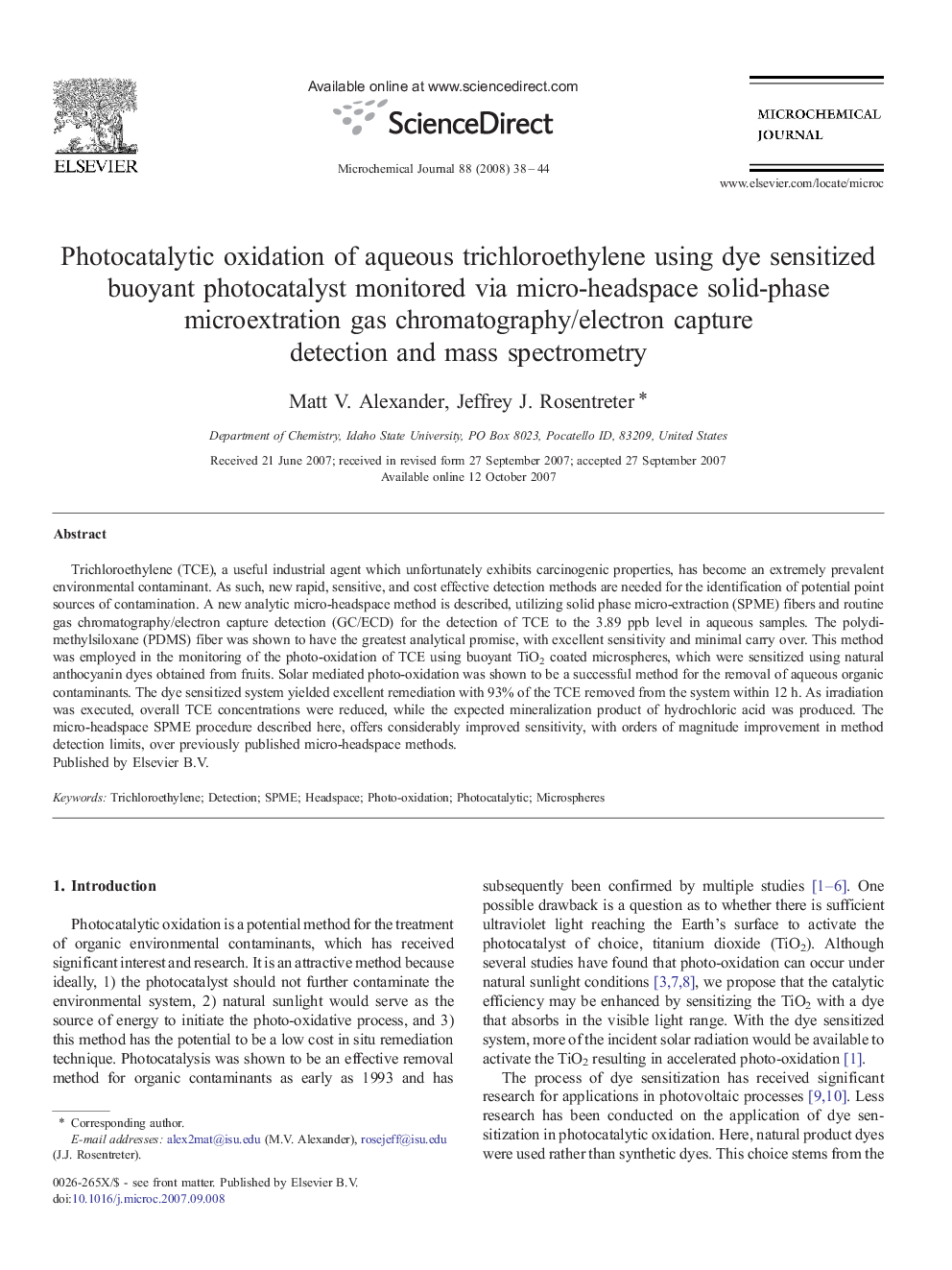| Article ID | Journal | Published Year | Pages | File Type |
|---|---|---|---|---|
| 1228300 | Microchemical Journal | 2008 | 7 Pages |
Abstract
Trichloroethylene (TCE), a useful industrial agent which unfortunately exhibits carcinogenic properties, has become an extremely prevalent environmental contaminant. As such, new rapid, sensitive, and cost effective detection methods are needed for the identification of potential point sources of contamination. A new analytic micro-headspace method is described, utilizing solid phase micro-extraction (SPME) fibers and routine gas chromatography/electron capture detection (GC/ECD) for the detection of TCE to the 3.89Â ppb level in aqueous samples. The polydimethylsiloxane (PDMS) fiber was shown to have the greatest analytical promise, with excellent sensitivity and minimal carry over. This method was employed in the monitoring of the photo-oxidation of TCE using buoyant TiO2 coated microspheres, which were sensitized using natural anthocyanin dyes obtained from fruits. Solar mediated photo-oxidation was shown to be a successful method for the removal of aqueous organic contaminants. The dye sensitized system yielded excellent remediation with 93% of the TCE removed from the system within 12Â h. As irradiation was executed, overall TCE concentrations were reduced, while the expected mineralization product of hydrochloric acid was produced. The micro-headspace SPME procedure described here, offers considerably improved sensitivity, with orders of magnitude improvement in method detection limits, over previously published micro-headspace methods.
Related Topics
Physical Sciences and Engineering
Chemistry
Analytical Chemistry
Authors
Matt V. Alexander, Jeffrey J. Rosentreter,
